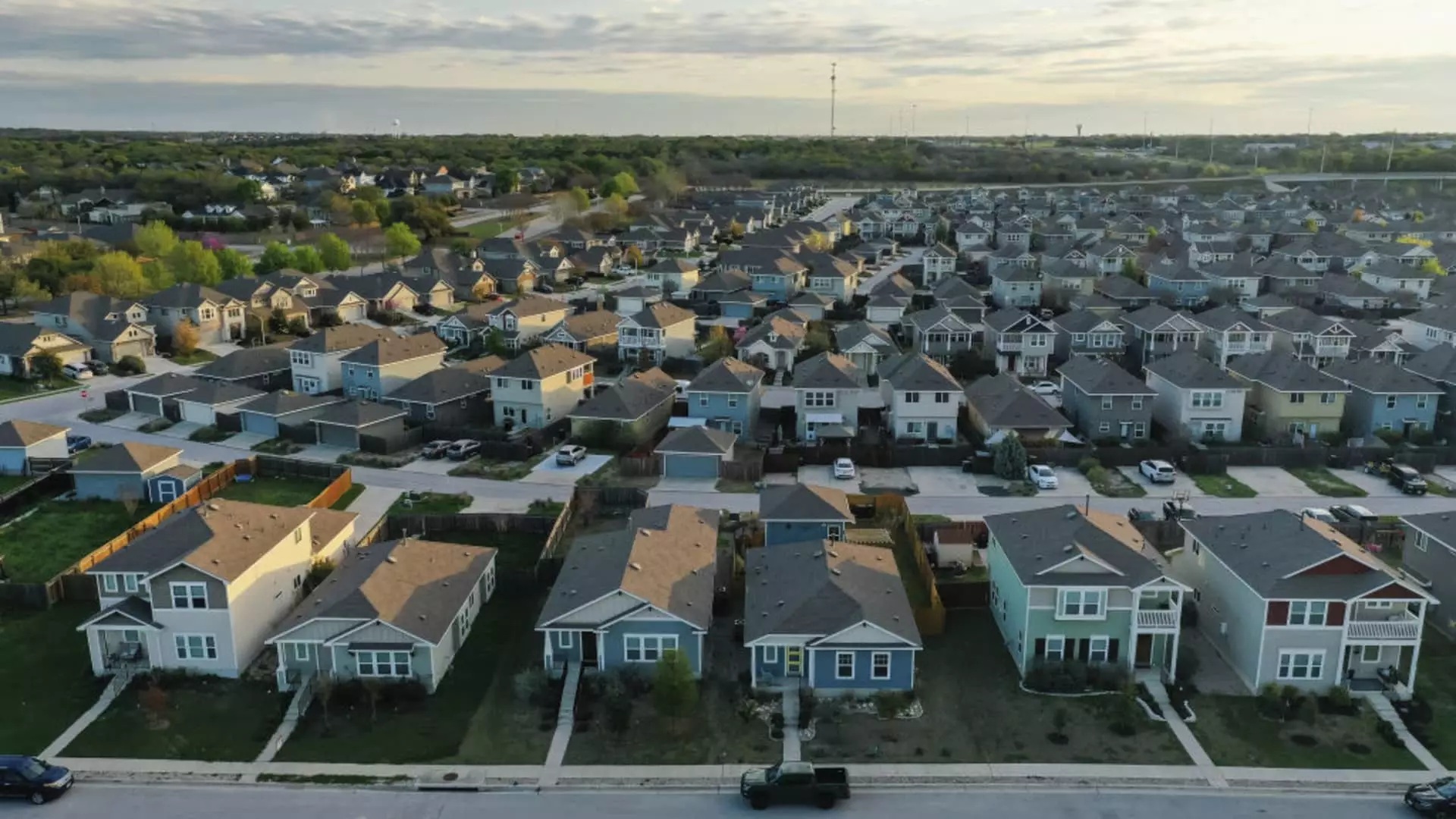The narrative surrounding homeownership in America has taken a troubling turn. With significant increases in rental populations across the suburbs, an unsettling reality emerges: traditional pathways to homeownership are increasingly blocked for average citizens. A recent analysis by Point2Homes highlights an alarming trend where, between 2018 and 2023, more than half of the suburbs adjacent to major U.S. metro areas witnessed a surge in renters. This issue is not just a byproduct of economic mismanagement; it reflects deeper societal cracks that threaten the American Dream itself.
Once upon a time, the suburbs were seen as sanctuaries for families seeking larger homes and safer neighborhoods, far from the hustle and bustle of urban life. However, as home prices have skyrocketed and mortgage rates climbed to nearly 7%—the highest figures since the pivotal 2008 financial collapse—the allure of homeownership fades. Even in suburbs that were once affordable, families find themselves priced out. Instead, they are compelled to rent, fostering a new class of citizens who may never taste the joy of owning a home.
Market Dynamics: The Shift towards Rentership
Data reveals that in only five years, Dallas, Minneapolis, Boston, Tampa, and Baltimore shifted radically toward rentership, with residents in suburban areas opting for leases over deeds. The Dallas suburbs, in particular, show an eye-opening increase of 17.6% in renters, dwarfing the 7.9% rise recorded in the city itself. This disparity paints a stark picture: the suburbs are now exceeding urban centers in attracting renters. In economic terms, this is not just a demographic shift but a paradigm change that must be examined critically.
Rising costs across the board, including mortgage and insurance rates, have fueled the trend toward renting. For many, the thought of living under crushing monthly payments incites anxiety rather than excitement. The ability to rent a property that feels like home without the perpetual fear of escalating costs or repairs is enticing. The current landscape is one where even decent living spaces are beyond the financial reach of average families, pushing a generation into a rental culture that bears grave implications for the future.
The Consequences of Escalating Housing Costs
This burgeoning rentership trend has consequence far beyond mere economic data. As families are pushed farther into the suburbs, they risk losing essential connectivity to urban amenities that contribute to a healthy community life. The continued exodus from cities may result in isolation, decrease in communal support networks, and strain on local resources such as transportation, schools, and healthcare.
The words of Tara Raghuveer, director of the Tenant Union Federation, resonate painfully true when she warns that families may soon find themselves out of touch with necessary services, leading to long-term implications on their livelihood and wellbeing. As suburban areas morph into heavily rented regions, the community fabric begins to fray. It raises pressing questions about the socio-economic models guiding urban and suburban planning in America. What happens when rentership becomes the default state, rather than homeownership?
Landlord Perspective: A Double-Edged Sword
While many groups see escalating rentership as a crisis, landlords and developers frame it as an opportunity. With less maintenance and fewer financial responsibilities, the attraction of suburban rental properties becomes evident. George Ratiu of the National Apartment Association notes that managing one consolidated payment is appealing to many would-be residents. However, championing the ease of renting overlooks the underlying fact that many are forced into such situations due to systemic failures in housing policy and economic structure.
Moreover, the construction of suburban downtowns and mixed-use developments—marketed as solutions—may not truly address the affordability crisis. Instead, they create a new tenant elite while neglecting the foundational issue of supply vs. demand disparities. The landlords profit, while the average family continues to sink deeper into the rental abyss. This reality demands scrutiny.
A Call for Reflection: A New Policy Paradigm
As the trend towards suburban rentership accelerates, it stirs visceral concern among those who cherish the ideals of homeownership. While renting may provide immediate relief for many, it serves as a dangerous crutch that perpetuates a broken system. Rather than merely accepting this shift, we must call for aggressive policy interventions to address the core issues—making homeownership accessible again, reforming zoning laws, and introducing measures that encourage new construction at every price point.
The time for complacency is gone; we have entered a pivotal moment where policies must cater to the long-term dreams of families, not just the short-term profits of investors. By tackling this issue head-on, we can prevent a future where the suburbs are dominated by renters, losing the essence of what made them attractive in the first place. The future of American homeownership hangs in the balance, and it is time we take action before it slips completely out of reach.

